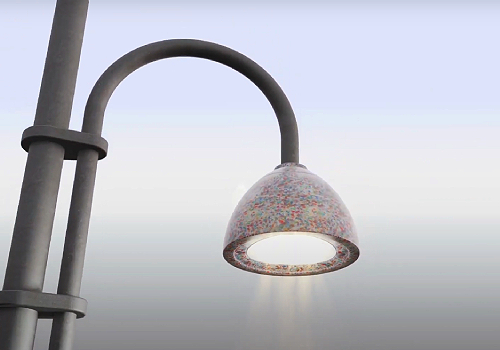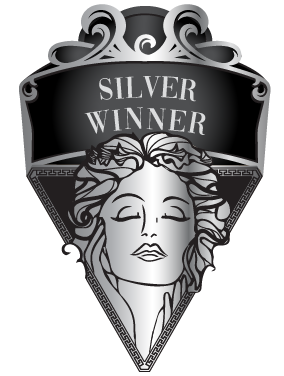
Interview
Alessandro Deodati
1 Please give us a brief bio of yourself and your design background.
My name is Alessandro Deodati and I am an engineer with a Master
2 What made you become/why did you choose to become a designer/artist?
I wanted to change the paradigm of designing urban lighting fixtures by putting ec- design and circularity at the heart of my projects, because I think that the circular economy model is the path that needs to be followed by everyone in order to contribute to safeguard our planet. A design based on the efficient use of resources and materials makes it possible to both reduce environmental impact and quantity of waste related to the manufacturing of the product itself, and to work on its durability, repairability, and possibility of upgrading and recycling at the end of its service life.
3 Tell us more about your business/company, job profile, and what you do.
I am Head of Research & Development at Niteko Srl, an Italian company that manufactures LED lighting fixtures for outdoor lighting. I have always been committed to researching and studying new materials with a low environmental impact in order to replace the use of traditional die-cast aluminum in urban lighting, and to designing new kind of shapes that overcome the limits of the traditional molding technologies.
4 What does “design” mean to you?
For me, design means giving expression to creativity by interpreting it through the constant search for new shapes in the name of a continuous improvement that aims at a sustainable development.
5 What’s your favorite kind of design and why?
As an engineer, I would say functional design with an eye on aesthetic sensitivity, curiosity and open-mindedness towards transversal disciplines. In this way, in urban lighting
6 To you, what makes a “good” design?
I think the ability to re-interpret the past without debasing it or, even worse, misrepresenting it; aiming at manufacturing techniques that allow producing individual batches (as in the craftsmanship of the past) as long as the manufacturing process makes it possible to achieve a high customization. In this way, the product becomes a
7 Describe your design style and its main characteristics.
I would say industrial design playing with shapes, colors and frameworks, and giving the works a new and interesting sense, never putting functionality in the background: every object
8 Tell us about your design process.
According to me, a design process is not aimed at putting forward again the formal outline of new architectural and contemporary luminaires, but must affirm its own autonomous architectural identity with a brave vision, while adopting a language able to relate with its urban role: a connection between the old and new urban architecture. My process starts from the knowledge of the places where the designed object will be installed and from the definition of its architectural and functional needs. Here, its characteristic lines are outlined starting from their functional physical limits and then they take shape into more or less articulate geometries. Later I move on to the prototyping phase and I create all the possible solutions always paying particular attention to the search for balance between sustainability and architectural needs by looking for innovative technical solutions in full compliance with the environments.
9 Do you think your country and its cultural heritage has an impact on your design process?
Sure, Italy offers ideas everywhere. We are surrounded by this sense of
10 Congratulations! As the winner of the 2023 MUSE Design Awards, what does it mean to you and your company and team to receive this award distinction?
It means a prestigious award which we are very proud of. It underlines how the efforts made by my team and me
11 Can you explain a bit about the winning work you entered into the 2023 MUSE Design Awards, and why you chose to enter this project?
This work encloses the 3R of circularity: reuse, repair and recycle. The design project of our urban luminaire starts from recycling, which characterizes its texture by giving it a sort of essential and inimitable identity at the same time. It is a project aiming at harmoniously merging with urban contexts with soft and simple geometries, always in an identity-oriented manner.
12 What was the biggest challenge with this project?
The biggest challenge was to make it truly feasible to replace old production technologies
13 How has winning an Award developed your practice/career?
It certainly gave greater prominence to the fact that we have obtained an aesthetically pleasing luminaire while using secondary raw materials, which is a recognition that goes beyond, in this sense, the award itself.
14 What are your top three (3) favorite things about our industry?
The fact that artificial light gives people the possibility to live beyond the hours of natural light, to choose what to show off and what to hide in the dark, thus defining meeting areas in a city. Or the possibility of influencing an environment and people
15 What makes your country specifically, unique in the design industry?
Italy has a millenary culture. Wherever you are, it is inevitable to come across a place of historical importance characterized by relevant artistic and architectural features, which definitely influence the identity of Italian design, full of examples of creativity.
16 Where do you see the evolution of design industry going over the next 5-10 years?
Design has always been at the service of society. Its main task has been, and will be, to find aesthetic and functional solutions to everything we experience. I imagine the design of the future more and more attentive to sustainability and to zero impact, not only to carbon emissions but also to the territories in which it will be installed or will interact, also due to its production chain. The speed of design will be increasingly possible thanks to the technologies available on the market. 3D printers or rotomolding, all this will make it possible for a new object to be studied, manufactured and placed on the market in a short time and with significant cost reductions, thus encouraging companies to innovate more easily and with fewer risks. Design is changeable just like the society we live in. It follows us and anticipates us. Its future will be what we will be.
17 If you were a student entering this industry or an aspiring MUSE Design Awards submitter, what advice would you give them?
If I had to give and advice to someone aspiring to launch into a challenge such as the MUSE Design Awards, I would say to be impressive with his/her project by following those trends that are now cornerstones of the contemporary world and by broadening his/her horizons, in order to understand what is innovating and evolving in other countries. Because these are the starting points for personal research and for designing.
18 What resources would you recommend to someone who wants to improve their skills in the design industry?
Follow as many available courses and models as possible, including famous designers and architects, travel to different countries and explore different sectors so as to discover new technologies to be reapplied in other contexts, where they are not yet used.
19 Who has inspired you in your life and why?
The inspirations in my life range from art to nature. The shapes in nature are different; they change continuously and can always be an inspiration for me for concepts and shapes, for versatility and colors. But I can also be inspired by a series of apparently anonymous objects that lend themselves to be revisited in an iconic key, in which there is a combination of functionality and minimalism to be re-interpreted in a new way.
20 What is your key to success? Any parting words of wisdom?
I would say seeking beauty in the simplicity of functional forms by letting their elegance speak, an elegance integrating both in the spaces created by people for people and in the landscapes.

